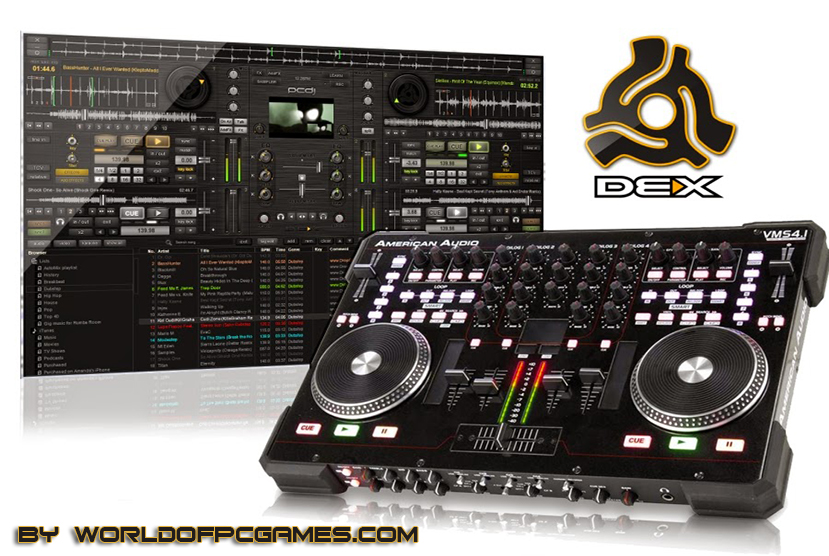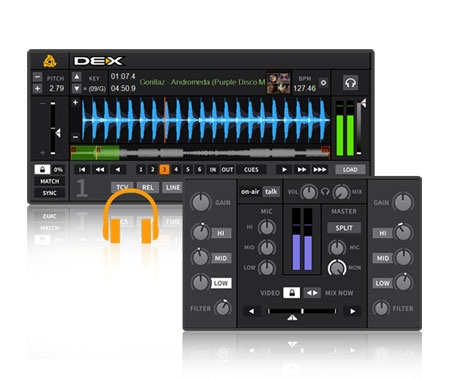

MAC users do have the benefit of Mac’s “Core Audio” drivers – which offer much lower latencies (around 3-6ms on average) and multichannel support.
#Best external sound card for pcdj dex 3 driver#
While WASAPI and WDM both support multichannel output, and lower latencies than the basic direct sound driver included on the Windows platform, they still run around 30ms latency (time the DJ software takes to react to a button press or virtual slider movement etc) and doesn’t help the fact the sound card itself only offers one true stereo output.

Sound cards included on Windows machines utilize “ DIRECT SOUND“, “ WASAPI” or “ WDM” drivers. The sound card you receive with your computer is not a “pro sound card” and furthermore, doesn’t offer more than a single stereo output or surround sound. Got that? Yeah, a tad bit technical, agreed! The integrated sound system is often still referred to as a “sound card”.” The best plug-in cards, which use better and more expensive components, can achieve higher quality than integrated sound. Sound functionality can also be integrated onto the motherboard, using basically the same components as a plug-in card. Typical uses of sound cards include providing the audio component for multimedia applications such as music composition, editing video or audio, presentation, education and entertainment (games) and video projection. The term sound card is also applied to external audio interfaces that use software to generate sound, as opposed to using hardware inside the PC. “A sound card (also known as an audio card) is an internal computer expansion card that facilitates the input and output of audio signals to and from a computer under control of computer programs. In more detail, this excerpt from Wikipedia explains best: What is a Sound Card (or otherwise known as Audio Card)?įirst off, your computer already has one built in (laptops have integrated single stereo output or surround sound output cards included by default) A sound card essentially turns digital audio player output (audio files) into audio signals that can be amplified and played, just like when you amplify the signal from CD decks. Your mixes will sound better for it, and your fans and clients will appreciate it.Since our product specialists here at a PCDJ receive this question often from first-time callers, I figured it was worthy of its own blog post… If you haven’t tried creating mixes using songs of the same or similar key it’s time to give it a go. Once you’ve scanned your tracks you can use DEX 3’s “Key Search” to quickly locate songs of the same key (some DJs will use DEX 3’s color coding for different key values so they can visual identify songs of the same key quickly).ĭJs can also use DEX 3’s “Key Stepper” to adjust a songs key on the fly to match the key of the playing track (Turn on High Quality Time Stretching under the General Tab in DEX 3’s options for Key Stepping to work). Both keys are displayed in the DEX 3 browser near the BPM tag. DEX 3 will calculate and display both the modified Camelot Scale (pre /) and musical key (post /). While still a practiced skill DJs will inherently learn as they build more time behind the digital DJ decks, DEX 3 (pro) provides a simpler method…ĭEX 3 will detect both the BPM and KEY of a song (turn on “key detection” under the General Tab in DEX 3’s options to enable it) when loaded into a deck or during batch analyzation. In yesteryear it was considerably a more difficult task to mix songs harmonically as DJs largely had to rely almost exclusively on their own ears.

You will have overlaying melodies that will clash unless you’re taking key into account. When mixing open format or mixing pop music, mixing in key is even more vital as you’re often left without longer intro’s and outro’s as mix in and out points. The melodies intertwine as if they were a match made in production heaven. When you hear a perfect mix that sounds like it was done in the studio and not by the performing DJ you can bet they are mixing songs in key in addition to on beat.


 0 kommentar(er)
0 kommentar(er)
